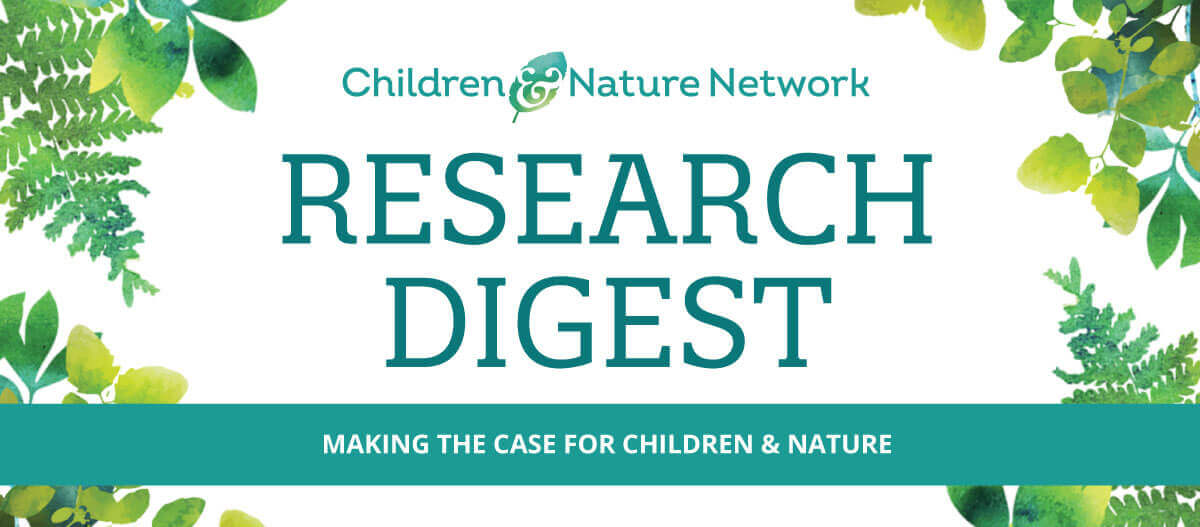Environmental Living
Greenness around homes, schools and in the larger community is linked to more positive health outcomes, including healthier weight, a better functioning immune system, improved sleep, and overall child development.
Higher school-based greenness levels are associated with healthier weight in children and adolescents
In a study involving more than 56,000 students in China, over 15% were overweight and over 9% obese. Healthier-weight children were more likely to attend schools with more greenery than overweight/obese children.
Bao et al. 2021. Greenness surrounding schools and adiposity in children and adolescents: Findings from a national population-based study in China. Access Study
More greenery may not predict more positive sleep outcomes in children
Research from Germany and Australia found no clear associations between nearby green space and sleep outcomes for a large population of children. There were some differences by gender and age.
Feng et al. 2020. Impact of residential green space on sleep quality and sufficiency in children and adolescents residing in Australia and Germany. Access Study
A literature review strengthens the evidence base on the health benefits of green spaces for children
A review of the literature on the potential impact of childhood exposure to green space identified four areas of positive impact: perinatal health, physical exercise, respiratory health, and neurodevelopmental health.
Islam, Johnson & Sly, 2020. Green space and early childhood development: A systematic review. Access Study
Literature review provides some evidence that greater access to green space predicts activity level and weight-related health outcomes
Sample sizes included in this review ranged from 100 to over 44,000. Findings provide some support for a positive association between greenness and higher levels of physical activity, healthier weight, as well as less TV watching for children and youth.
Jia et al. 2020. Green space access in the neighbourhood and childhood obesity. Access Study
Exposure to green space during childhood may not protect against diabetes, contradicting prior thinking
Residential green space assessments conducted four times during childhood and a diabetes risk assessment in early adolescence indicated that childhood greenspace exposure does not reduce the risk of diabetes.
Jimenez et al. 2020. Early life exposure to green space and insulin resistance: An assessment from infancy to early adolescence. Access Study
Residential trees and community greenspace are associated with lower levels of childhood obesity
Data from two different age groups (4-5; 10-11) in the United Kingdom showed a significant positive association between healthy weight and residential tree density. Green space further afield was linked to less obesity in the older group.
Mears et al. 2020. Neighborhood greenspace influences on childhood obesity in Sheffield, UK. Access Study
More urban greenery is associated with lower indoor particulate matter and noise annoyance
Data from sensors placed in urban European households with young children showed that homes with more surrounding greenness had less indoor particulate matter and less road noise.
Mueller et al. 2020. Urban greenspace and the indoor environment: Pathways to health via indoor particulate matter, noise, and road noise annoyance. Access Study
Adding biodiverse elements to a play yard can enhance preschoolers’ immune systems
Finnish children attending a childcare center with natural forest floor in their play yard had more diverse skin and gut bacteria and signs of better immune system functioning than children in centers without the forest floor.
Roslund et al. 2020. Biodiversity intervention enhances immune regulation and health-associated commensal microbiota among daycare children. Access Study
Urban forests contribute to human health by reducing harm, restoring capacities, and building capacities
Of 201 studies exploring how trees affect human health, 82 focused on reducing harm, 63 on restoring capacities, and 56 on building capacities. Only 13% of the studies focused on children.
Wolf et al. 2020. Urban trees and human health: A scoping review. Access Study
Street greenery is significantly associated with children’s active school transport and body weight status
A study examining the possible role of neighborhood greenness on physical activity found that students attending Hong Kong schools with greener surrounding areas were more likely to engage in active school transport and more likely to have healthier weight.
Yang et al. 2020. Urban greenery, active school transport, and body weight among Hong Kong children. Access Study





